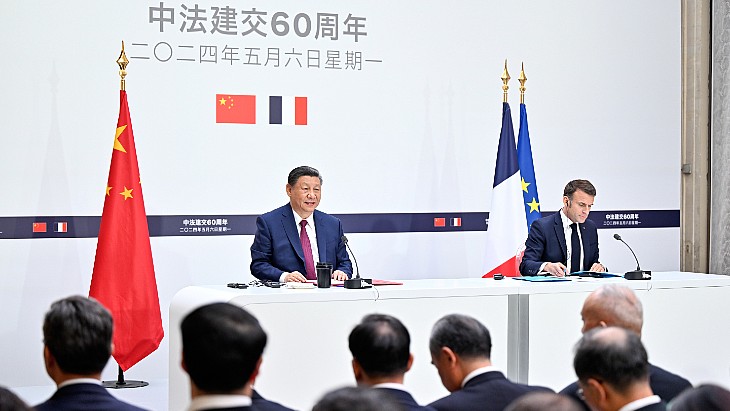Wylfa could be suitable for new large-scale reactors or small modular reactors.
The UK government is in talks to take control of a key site in Wales earmarked for a nuclear power station as part of wider plans to roll out new reactors as part of the nation’s biggest expansion in nuclear power for 70 years.
According to press reports, state-owned Great British Nuclear is in early-stage discussions with Hitachi, owner of the land in Wylfa in Anglesey, an island off north Wales, to buy the site with a view to finding a new private sector partner to develop a station there.
The future of the site has been uncertain since Hitachi abandoned plans to build a new reactor there in January 2019 after failing to strike a financial agreement with the British government.
The Japanese industrial group eventually wrote off £2.1bn (€2.4bn, $2.6bn) on the project. It also stopped work at a second site in Oldbury, South Gloucestershire.
The Wylfa site has been valued at £200m, according to the Financial Times, which first reported the talks between Hitachi and GBN.
Wylfa is home to two gas-cooled Magnox plants that were permanently shut down in 2012 and 2015 and is seen as suitable site for large reactors or a small modular reactors (SMRs).
The London-based Nuclear Industry Association welcomed the reports about Wylfa. Chief executive Tom Greatrex called the talks a welcome step in making a new project at Wylfa a reality.
‘One Of The Very Best Sites For Nuclear’
“It’s one of the very best sites for new nuclear in the UK and the success of ramping up nuclear to the levels needed for energy security and net zero rests a great deal on whether we develop at Wylfa.”
In January, the UK government set out plans for what it claimed will be Britain’s biggest nuclear power expansion in 70 years with the possible construction of about 11 new reactors by 2050 – enough to meet a quarter of the national electricity demand.
Ministers published a roadmap that recommitted the government to building a fleet of nuclear reactors capable of producing 24 GW by 2050 – an increase from around 5.8 GW today.
Energy secretary Claire Coutinho said a nuclear revival was essential to cut greenhouse gas emissions and boost energy security, especially after the crisis in gas supplies that followed Russia’s invasion of Ukraine.
Companies and institutions in the UK nuclear industry on Monday (12 February) said they were launching a recruitment drive to ensure there were enough workers to sustain the government’s push.
The campaign, Destination Nuclear, said the number of employees needed to double in size over the next 20 years to support the possible quadrupling of output.
There are about 64,500 workers across the UK civil nuclear supply chain, plus thousands more in defence, according to the Nuclear Industry Association, a lobby group.
It has support from the French state-owned energy company EDF, engineers such as Atkins, Jacobs and Laing O’Rourke, as well as companies involved in the UK’s nuclear weapons and submarines programmes including Babcock, Rolls-Royce and BAE Systems.
Background: Falling Output, No New Plants
The share of nuclear energy in the UK’s electricity generation has fallen to around 15% from 27% in the 1990s as older plants have been decommissioned and no new plants have come online.
Since 2000, the UK has seen permanent reactor shutdowns at Bradwell, Calder Hall, Hinkley Point A, Hinkley Point B, Hunterston, Oldbury, Sizewell, Chapelcross, Dungeness and Wylfa. The last unit to go offline was Hinkley Point B-1 in August 2022.
The government and developer EDF Energy started a process last year to bring private equity investment into the planned Sizewell C project, with EDF saying a sustainable commercial model is needed for a final investment decision.
EDF Energy is planning to extend the life of four nuclear power stations in the UK and invest £1.3bn in its nuclear fleet as it aims to maintain UK nuclear output at current levels until at least 2026.
The French energy company said it would make a decision on whether to extend the life of the four advanced gas-cooled reactor stations – Torness, Heysham A and B, and Hartlepool A – by the end of the year. This would require regulatory approval.
EDF Energy operates all of Britain’s five nuclear power stations that generate electricity. A further three are defuelling (Hunterston B, Hinkley Point B and Dungeness B), the first stage of decommissioning. The only new commercial reactors under construction in the country are two EPRs at Hinkley Point C.
